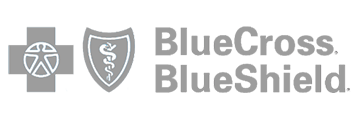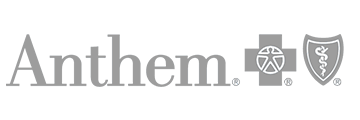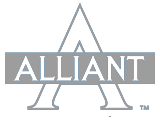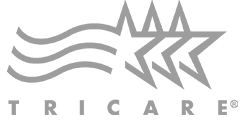Addiction
Gabapentin vs Lyrica: Similarities and Differences
Medically Reviewed By
Written By
Last medically reviewed August 18, 2025
Addiction
Medically Reviewed By
Written By
Last medically reviewed August 18, 2025
When it comes to prescription drugs for treating neuropathic pain, gabapentin and Lyrica are the most frequently mentioned. Despite their similarities, these two medications have several differences. This might lead you to wonder when it’s appropriate to use one instead of the other or if they can be used interchangeably.
Here, you’ll learn how the two medications work, how they differ, and when it’s best to choose one over the other.
Lyrica is the brand name for the generic drug pregabalin. This medication belongs to the drug class gamma-aminobutyric acid analogs.[1] They work by slowing down impulses in the brain that can lead to seizures. They also affect chemicals in the brain that send pain signals throughout the central nervous system. In 2004, Lyrica was given FDA approval for the treatment of neuropathic pain and seizures.[2]
Lyrica is also used to treat:[3]
Pregabalin also has several off-label uses, which include treating generalized anxiety disorder, social anxiety disorder, chronic pain conditions, restlessness, and trigeminal neuralgia.[3] Individuals suffering from chronic cough or insomnia may also be prescribed pregabalin as an initial treatment.
Gabapentin is a generic medication from the gamma-aminobutyric acid analogs class of drugs.[4] Scientists aren’t entirely sure how this medication works. However, it has been observed to decrease abnormal activity in the brain that can lead to seizures. It also reduces the response to painful stimuli.[4]
According to StatPearls, gabapentin was FDA approved in 1993 to treat the following conditions:[5]
Gabapentin is sold under the brand names: Horizant, Neurontin, Gabarone, and Gralise.[6] Each formulation treats a different type of pain.
This medication can also be used off-label to treat conditions including alcohol withdrawal syndrome, anxiety, depression, and movement disorders, including amyotrophic lateral sclerosis (ALS).[5]
Both gabapentin and Lyrica are administered orally. However, their doses differ.

Gabapentin and Lyrica share several similarities that extend beyond their generic prefix ‘gaba’.
Lyrica and gabapentin are anticonvulsants used to treat similar conditions. However, despite their similarities, they differ in many ways.
The following list demonstrates how Lyrica and gabapentin differ:[11]
Although both drugs belong to the same class and have similar mechanisms of action, there are times when a physician will want to prescribe one over the other. The reasons for choosing one medication over the other include the following:
Individuals who require a gabapentinoid medication may be prescribed either. However, in cases where the patient cannot tolerate the side effects of one, their physician may consider switching them to the other.
Yes, Lyrica is listed as a Schedule V Controlled Substance, which means it is federally controlled. Medications in this class have the potential for abuse and misuse, which can lead to dependency. When taken as prescribed, there’s a relatively low risk of Lyrica dependency. However, taking it in abusive doses or in a manner other than prescribed greatly increases the likelihood of developing a tolerance.[12]
When someone develops a tolerance, they will need more of the medication to experience the original effects. Since Lyrica is a potent drug, taking too much can lead to dependence and even overdose.[13]
According to an abstract published by PubMed, gabapentin and pregabalin are both approved for adjunctive therapy and pain control.[14] However, in some instances, they are used together as a combination therapy to treat severe neuropathic pain. In this instance, researchers found that using it together produced a synergistic effect and pain control without a clinically significant interaction.
This form of combination therapy is a first-line treatment for individuals experiencing refractory pain and those with low levels of tolerance for an individual agent.[14]
Disclaimer: These two medications should not be combined without the consent of a physician. Combining them without guidance will increase their side effects and the risk of a possible overdose.
Yes, sometimes a doctor may prefer their patient to start with one medication before switching to the other. This approach is common in the initial treatment stages to assess how the patient tolerates the drug. It can also be a cost-effective strategy, as insurance plans might cover one medication but not the other.
Some individuals mix gabapentin or Lyrica with opioids to induce a euphoric high. However, doing this has been shown to increase the risk of respiratory depression and the unfortunate occurrence of opioid related deaths.[15] Mixing gabapentin with an opioid can lead to a fourfold higher risk of respiratory depression and overdose-related death than taking it on its own.[15]
Although one percent of the population is estimated to abuse gabapentin, 15 to 20% of people who abuse opioids were found to have gabapentin in their system.[15]
Signs of gabapentin and Lyrica addiction include:[15]
Both gabapentinoids are dangerous to withdraw from without a taper dose. Doing so can lead to a seizure. Before stopping your prescription, speak to your physician.
Next, reach out to a drug and alcohol rehab, such as Southeast Addiction Center GA, to help you overcome your struggle with addiction. We provide a supportive environment away from triggers and temptations that may cause you to use. We also offer a structured schedule to help you establish habits that can reduce the risk of relapsing.
Our programs feature behavioral therapy and peer support to boost overall well-being and help you develop healthier coping skills that lower the risk of relapse.
To learn more about our comprehensive approach to care, give us a call at (615) 326-6449.
Lyrica is the brand name for pregabalin. It is an anti-convulsive medication used to treat nerve pain and seizures in individuals with epilepsy.
Although both medications are gabapentinoids, Lyrica is a more potent medication than gabapentin. It is also federally controlled due to its proclivity to abuse and misuse. Unlike gabapentin, Lyrica cannot be used to treat alcohol withdrawal syndrome.
No, Lyrica and gabapentin are not the same medication, though they both belong to the same class of drugs and treat similar conditions.
Some studies have highlighted the use of combination therapy, or mixing Lyrica and gabapentin to treat refractory pain. However, this should only be done under a doctor’s supervision.
Gabapentin is less addictive than Lyrica, which is why it is not federally controlled. It is also significantly less potent than Lyrica. However, using either drug in an abusive fashion can result in psychological dependence.
[1] Drugs.com. (2024 Nov 18). Lyrica. Retrieved from https://www.drugs.com/lyrica.html on 2025 Aug 8.
[2] FDA. (2004 Dec 30). Drug Approval Package. Retrieved from https://www.accessdata.fda.gov/drugsatfda_docs/nda/2004/021446_LyricaTOC.cfm on 2025 Aug 8.
[3] StatPearls. (2024 May 2). Pregabalin. Retrieved from https://www.accessdata.fda.gov/drugsatfda_docs/nda/2004/021446_LyricaTOC.cfm on 2025 Aug 8.
[4] Drugs.com. (2025 Apr 7). How Long Does it Take Gabapentin to Work? Retrieved from https://www.drugs.com/medical-answers/long-gabapentin-work-3557481/ on 2025 Aug 8.
[5] StatPearls. (2024 Feb 21). Gabapentin. Retrieved from https://www.ncbi.nlm.nih.gov/books/NBK493228/ on 2025 Aug 8.
[6] Drugs.com. (2025 Jul 25). What is Gabapentin? Retrieved from https://www.drugs.com/gabapentin.html#:~:text=Gabapentin%20(Neurontin%2C%20Gralise%2C%20Horizant,group%20of%20medicines%20called%20anticonvulsants. On 2025 Aug 8.
[7] Medscape. (n.d.). Pregabalin (Rx). Retrieved from https://reference.medscape.com/drug/lyrica-cr-pregabalin-343368 on 2025 Aug 8.
[8] British Journal of Pain. (2020 Mar 13). Gabapentinoids: Pharmacokinetics, Pharmacodynamics and Considerations for Clinical Practice. Retrieved from https://pmc.ncbi.nlm.nih.gov/articles/PMC7265598/ on 2025 Aug 9.
[9] United States Drug Enforcement Administration. (n.d.). Drug Scheduling. Retrieved from https://www.dea.gov/drug-information/drug-scheduling on 2025 Aug 8.
[10] Drugs.com. (2024 Nov 25). Is Gabapentin a Controlled Substance/Narcotic? Retrieved from https://www.drugs.com/medical-answers/gabapentin-narcotic-controlled-substance-3555993/ on 2025 Aug 8.
[11] Drugs.com. (2025 Apr 28). Lyrica vs Gabapentin: What’s the Difference? Retrieved from https://www.drugs.com/medical-answers/difference-between-lyrica-gabapentin-3508860/#:~:text=Lyrica%20may%20also%20be%20used,ibuprofen%2C%20naproxen%2C%20and%20diclofenac. On 2025 Aug 8.
[12] Medical News Today. (2023 Sep 13). What to Know About Drug Tolerance. Retrieved from https://www.medicalnewstoday.com/articles/drug-tolerance on 2025 Aug 9.
[13] National Library of Medicine. (2020 Jun 5). Pregabalin Poisoning and Rising Recreational Use: a Retrospective Observational Series. Retrieved from https://pmc.ncbi.nlm.nih.gov/articles/PMC7688538/ on 2025 Aug 9.
[14] PubMed. (2018 Apr). Is There a Role For Combined Use of Gabapentin and Pregabalin in Pain Control? Too Good to be True? Retrieved from https://pubmed.ncbi.nlm.nih.gov/29023146/ on 2025 Aug 8.
[15] Drugs.com. (2025 Mar 4). Is Gabapentin Addictive? Retrieved from https://www.drugs.com/medical-answers/gabapentin-addictive-3573085/ on 2025 Aug 8.






